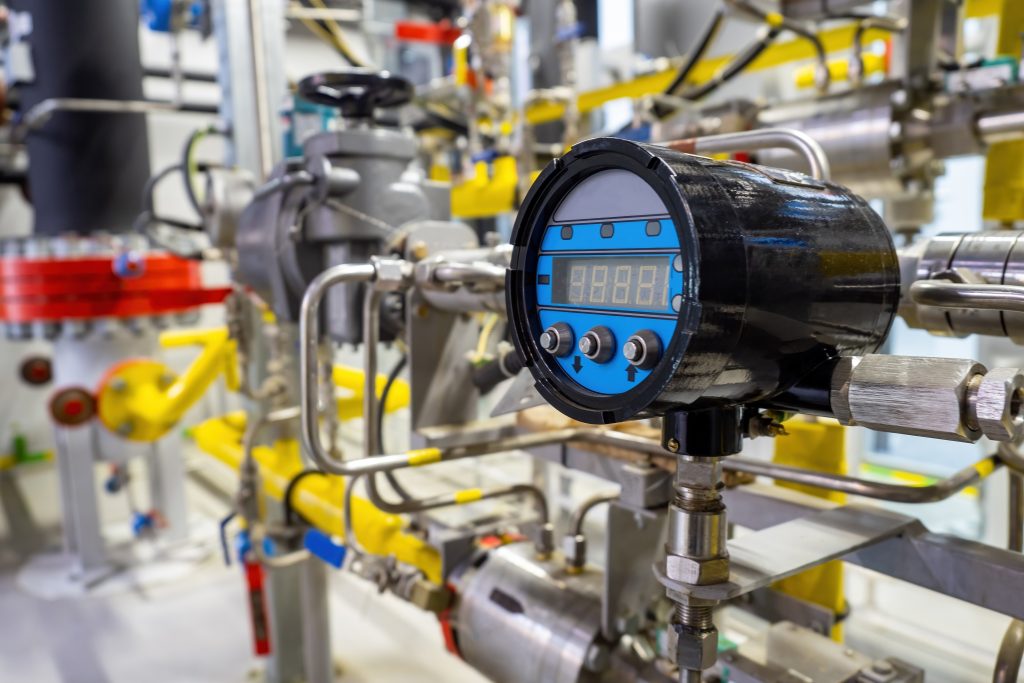Nitrogen+Syngas 398 Nov-Dec 2025

21 November 2025
AI and the nitrogen industry
ARTIFICIAL INTELLIGENCE
AI and the nitrogen industry
Artificial intelligence is beginning to extend into all facets of modern life, and the chemical process industry is no exception. This article looks at where and how AI is being applied in the ammonia and downstream industries, what data and infrastructure are required, and the potential risks.

The production of ammonia has underpinned modern agriculture, industrial chemistry and logistics for more than a century, and it now faces the dual challenge of improving operational efficiency while dramatically reducing greenhouse gas emissions. Historically dominated by the energy-intensive Haber–Bosch process, the industry is rapidly exploring electrification, process flexibility and new value chains such as green hydrogen-based synthesis. In this environment, artificial intelligence (AI) is a toolkit which presents opportunities to reduce the energy consumption of existing processes, make plants more resilient and safer, accelerate research into catalysts and materials, and enable economically viable green ammonia supply chains.
Process optimisation
Process optimisation and advanced control remain perhaps the most immediate opportunities for AI to deliver returns in ammonia production. Large-scale synthesis plants operate with thousands of measured variables and hundreds of manipulated variables, creating a high-dimensional optimisation problem that classical control methods struggle to fully exploit. Data-driven surrogate models, hybrid digital twins and enhanced model predictive control can reduce energy consumption and increase conversion efficiency by enabling tighter control of synthesis loop conditions, purge and recycle balances, and heat integration networks. Soft sensors built from supervised learning algorithms can estimate measurements that are expensive or slow to obtain in the laboratory, such as instantaneous catalyst activity or trace impurity concentrations. By replacing or augmenting manual sampling and slow analytical feedback with real-time estimators, plants can maintain operating points closer to optimal, reducing fuel consumption and improving throughput. A typical impact can be energy intensity reductions in the range of 2–15% and conversion/yield improvements of 0.5– 5%, depending on asset age and baseline control sophistication.
The emergence of green ammonia – where hydrogen is produced by electrolysers powered by renewable electricity – introduces a new dimension of operational complexity and opportunity. Variable renewable generation requires synthesis plants, electrolysers and air separation units to operate flexibly, ramping up during low-cost power windows and throttling back during scarcity. AI techniques such as stochastic optimal control and reinforcement learning are well-suited to derive dispatch schedules that trade off electricity cost, equipment degradation and synthesis stability. These methods can identify when it is economically optimal to operate electrolysis at partial load, to hold ammonia in storage, or to temporarily shut down synthesis loops, all while preserving equipment life and safety margins. In addition, price-aware scheduling combined with short-term forecasting of electricity prices and renewable generation reduces the levelized cost of green ammonia and improves project bankability.
Predictive maintenance
Predictive maintenance and reliability analytics are another area where AI has delivered rapid payback in industrial settings and where ammonia plants can expect similar gains. Rotating equipment such as compressors, pumps and refrigeration systems are both critical and expensive to replace; unplanned failures cascade into lost production and costly restarts. By aggregating vibration signatures, motor currents, bearing temperatures, oil analysis and operational logs, machine learning models can detect anomalous behaviour and estimate remaining useful life well in advance of catastrophic failure. Techniques ranging from unsupervised anomaly detection using autoencoders to supervised remaining-useful-life models built with gradient-boosted trees provide different trade-offs in label requirements and interpretability. Transitioning from calendar-based maintenance to condition-based strategies driven by live analytics typically reduces unplanned downtime, optimises spare parts inventories and lowers maintenance cost per tonne produced.
Energy management
Energy management, decarbonisation planning and retrofit evaluation are strategic applications where data-driven optimization can reveal opportunities that are not apparent from static engineering studies. AI-enabled scenario analysis can combine physics-based process models with data-driven corrections to evaluate the economics of electrification, waste-heat reuse, heat pumps or advanced heat integration under realistic electricity price trajectories. This capability is particularly important for large assets with long lifetimes; choosing the wrong retrofit or timing it poorly can lock in higher operating costs or suboptimal emissions profiles. By simulating a range of dispatch strategies and retrofit configurations under stochastic power prices and policy scenarios, organisations can prioritise investments that yield the most durable financial and environmental gains.
HSE
Safety, environmental monitoring and compliance are the core to any industrial process, and AI can augment these functions through improved detection, localisation and root-cause analysis. Multi-sensor fusion combining gas detectors, acoustic sensors, infrared cameras and meteorological data enables faster and more accurate leak detection than single-sensor approaches. Machine learning classifiers and probabilistic models can reduce false alarms while providing confidence scores that support operator decision-making. For emissions reporting and incident investigation, analytics applied to continuous emissions monitoring data and process logs can identify unusual release patterns, correlate them with upstream events and quantify environmental impact. Importantly, in safety-sensitive applications, AI systems should be deployed initially in advisory or shadow modes, with human operators retaining final authority until models have demonstrated robust performance across operating regimes.
Research
The use of AI to accelerate research in catalysts, materials and process design represents a strategic long-term opportunity with potentially high returns. Materials informatics approaches use Bayesian optimisation, Gaussian process surrogates and active learning to explore vast experimental spaces more efficiently than grid searches or purely manual experimentation. By combining experimental data, first-principles simulations and surrogate models, researchers can converge on promising catalyst compositions, supports and operating conditions with fewer laboratory runs. These methods have already shown success in related chemical domains and, when integrated into research and development workflows, shorten the development cycle for improved catalysts or process recipes that could increase conversion, reduce energy demand, or reduce reliance on scarce materials.
Data requirements
Delivering on these opportunities requires attention to data architecture and quality. The backbone of modern industrial AI is a reliable historian or time-series database that archives sensor data, event logs, laboratory results and maintenance records. Industrial protocols such as OPC-UA and telemetry standards like MQTT enable connectivity between programmable logic controllers (PLC), supervisory control and data acquisition systems (SCADA) and analytics platforms. Frameworks for training and serving models typically include libraries such as PyTorch, TensorFlow and scikit-learn, while plant historians like OSIsoft PI (or equivalent systems) provide the operational data foundation. Practical challenges are common: missing timestamps, inconsistent units, sensor drift and sparse failure labels can undermine model development. A focused data audit that inventories available signals, assesses sampling rates, checks clock synchronisation and quantifies label availability is a critical first step that informs whether additional instrumentation is required or whether advanced methods for label-scarce learning are needed.
Risks
Despite clear benefits, teams must plan for and mitigate several risks. Data quality and availability present the most immediate hazard; poor historical records and sparse failure examples create brittle models. The practical mitigation is to run an initial data-quality sprint, instrument missing critical signals, and design pilots around use cases with sufficient label density or where unsupervised approaches are effective. Model brittleness and distributional shifts are inevitable as plants change feedstocks, retrofit equipment or alter operating practices; continuous performance monitoring, automated drift detection and conservative operational guardrails reduce the risk of unsafe or suboptimal automated actions. Cybersecurity and data governance are non-negotiable; network segmentation, encrypted telemetry, strong authentication and role-based access to analytics platforms protect both operational integrity and commercial data. Finally, workforce acceptance must be addressed through early inclusion of operators, transparent model outputs and training programs that build data literacy among engineers and technicians.
Selecting partners for implementation is as important as selecting use cases. Organisations that combine deep process domain expertise with demonstrated machine learning capabilities offer the best chance of success, and avoiding lock-in through open APIs and standards-based connectivity preserves optionality. A pilot-first approach, contracted around measurable KPIs and staged deliverables, aligns incentives and reduces up front risk. Over the medium term, building internal capability ensures sustainability and lowers dependence on external vendors.





